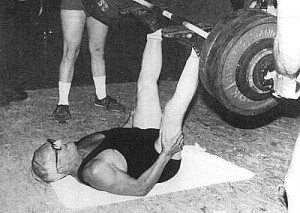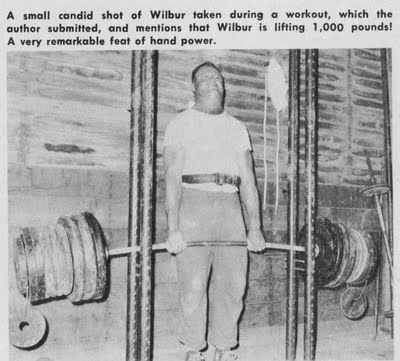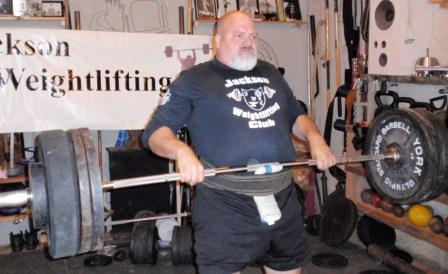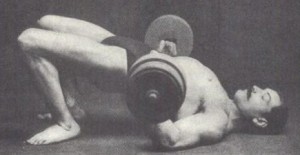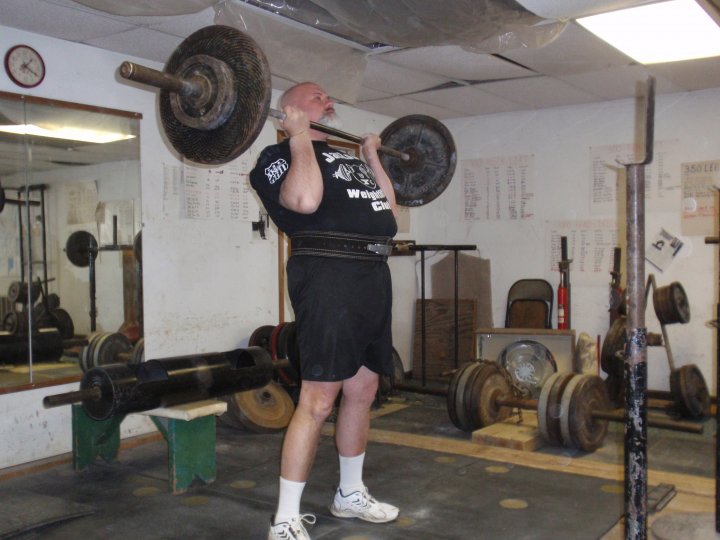Zercher Lift: A Missouri Original
by Thom Van Vleck
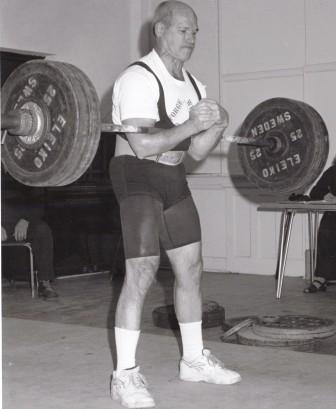
Denny Habecker completing the Zercher Lift. Denny will be at the 2011 USAWA Nationals where this lift will be contested
When I was selecting lifts for the 2011 USAWA Nationals to be held June 25 in Kirksville, Missouri I very carefully selected my lifts. I was trying to get a good mix from each of the major categories. I wanted a thick bar lift (Continental to Chest), a dumbbell lift/one arm lift (DB Snatch), a power type lift (Deadlift 12″ base), a miscellaneous lift (Cheat Curl), a pressing movement (Pull over and Press), and a squat movement. For the squat movement I picked the Zercher! I also wanted all the lift to come off the floor so that the meet could move along quickly and I was not sure how many spotters I would have.
While the list was then passed on the USAWA board to approve and they did approve it the only one that was questioned was the Zercher. Not because it’s a “bad’ lift, but because it’s been used several times before and there was just some thought that maybe we should “mix it up” a little. The problem for me was this was the ONE lift I felt I HAD to have in my meet. The reason: The Zercher was named after Ed Zercher and he’s a true MISSOURI born strongman!
One of the things I like about the USAWA is it’s respect for history and the desire to make sure many of these lifts from bygone years are remembered and practiced. Many of them have real merit and are often “rediscovered” in modern times. Look at Kettlebell lifting! My grandfather used to do Kettlebell training when I first stared lifting in the 1970’s and I remember thinking how “old fashioned” that was and he needed to get “modern” if he wanted to get strong! How naive I was! The Zercher has made a bit of a comeback for that same reason……in a way!
Many modern lifters have begun to do what they call “Zerk’s” or Zercher Squats. They take a weight out of low squat rack or power rack, squat with the bar in the crooks of the arms, and then reload it on the rack. This has become a variation that some lifters use in a mix with front and back squats but it is also one that guys have added that have trouble holding the bar in the front squat position or some other injury the precludes regular type squats. But of course, as “Ol’ Clark” himself would tell you…..THIS IS NOT A ZERCHER! Now, there’s nothing wrong with doing “Zerks” and they are a fine exercise to anyone’s repertoire of lifts.
There were some guys recently discussing “Zerks” on a message board and I got on there and pointed out the difference in what I thought was a polite, informative way. One of them blew up! He thought I was being petty bringing up the difference. But to me, Ed Zercher developed that lift and we need to honor the man by keeping things straight! With that said, here’s the rules for the Zercher lift:
So, come to Nationals and help me honor one of Missouri’s greatest Strongmen! Let’s Zercher!
